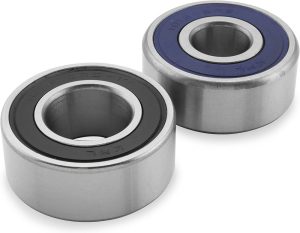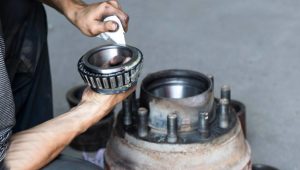When it comes to maintaining your vehicle’s wheels, the hub and bearing system plays a critical role in performance, safety, and smooth driving. However, many drivers and even some technicians are unsure about the difference between wheel hub assemblies and individual bearings — or when to replace one versus the other.
This guide breaks down the distinctions between these two components, outlines how they function, and helps you decide which to replace and when. Whether you’re doing your own maintenance or just want to understand your car better, this is your practical go-to resource.
What Is a Wheel Hub Assembly?
A wheel hub assembly is a complete, bolt-on unit that typically includes:
-
The wheel hub itself (mounts to the wheel and brake rotor)
-
Pre-sealed bearings inside the hub
-
ABS sensor (in most modern vehicles)
-
Mounting flange for the wheel and brake components
This system is designed for convenience and durability, with components sealed together to minimize maintenance.
Common in: Most modern front-wheel drive and all-wheel drive vehicles, typically from the early 2000s onward.
What Are Individual Wheel Bearings?

Individual bearings are separate mechanical components that allow the wheel to spin with minimal friction. These include:
-
Ball bearings
-
Roller bearings
-
Tapered roller bearings
They are press-fitted into the hub or spindle assembly and are usually greased manually during installation or replacement.
Common in: Older vehicles, trailers, heavy-duty trucks, and some off-road vehicles.
Key Differences at a Glance
| Feature | Wheel Hub Assembly | Individual Wheel Bearing |
|---|---|---|
| Design | Sealed, pre-assembled unit | Separate bearing fitted into hub |
| Installation | Bolt-on, plug-and-play | Press-fit, needs special tools |
| Maintenance | Maintenance-free | Needs lubrication and periodic service |
| Typical Vehicles | Modern passenger vehicles | Older cars, trucks, trailers |
| ABS Sensor | Often integrated | Not included or external |
| Replacement Process | Entire unit is replaced | Only the bearing is replaced |
| Replacement Time | Quick | Labor-intensive |
Pros and Cons of Each System
Wheel Hub Assembly
Pros:
-
Easy and fast to install
-
Often includes ABS sensors
-
No need for pressing or greasing
-
Better for modern diagnostic systems
Cons:
-
More expensive to replace
-
Must replace entire assembly if one part fails
Individual Bearings
Pros:
-
More affordable per unit
-
Can replace just the failed bearing
-
Ideal for rugged use in trucks and trailers
Cons:
-
Requires special tools (bearing press)
-
Time-consuming to install
-
Risk of improper fit or contamination
Symptoms of Wear and Failure
Regardless of which system your vehicle uses, signs of a worn bearing or hub include:
Common Warning Signs:
-
Grinding or humming noise while driving
-
Wheel wobble or excessive play
-
Uneven tire wear
-
ABS warning light (hub assemblies with sensors)
-
Vibration in the steering wheel
-
Clicking or snapping when turning
When to Replace Hub Assemblies vs. Individual Bearings

Replace Your Wheel Hub Assembly If:
-
The ABS light is on due to sensor failure
-
You hear noise and drive a modern car with a sealed unit
-
You feel vibrations and the hub can’t be serviced
-
The hub is damaged or shows rust/corrosion
Replace Your Individual Bearing If:
-
You’re performing axle or brake service on older vehicles
-
You hear humming or feel resistance when rotating the wheel
-
There’s visible grease leakage
-
You have access to the right tools for pressing new bearings
Cost and Labor Comparison
| Task | Wheel Hub Assembly | Individual Bearing |
|---|---|---|
| Average Part Cost | €80–€200 | €20–€80 |
| Labor Time | 30–90 minutes | 1.5–3 hours |
| Tools Required | Basic tools | Press, bearing tools, torque wrench |
| Total DIY Feasibility | High | Moderate to Low |
Where to Buy Hub and Bearing Components
Choosing the right replacement part is essential for long-term performance. Always check compatibility with your make, model, and year.
For a wide selection of reliable parts, including both hub assemblies and individual bearings, Buy Hub & Bearings online. Get quality-tested components from trusted brands delivered directly to your door.
Final Thoughts
Understanding the difference between wheel hub assemblies and individual bearings helps you make smarter repair choices and prevent unnecessary breakdowns. If you’re driving a newer car, you’ll likely deal with pre-assembled hubs. If you own an older vehicle or trailer, you may need to press-fit individual bearings.
Whichever you have, timely replacement ensures your wheels spin freely, your car rides smoothly, and your safety stays intact.
Still not sure which part you need? Consult your vehicle’s service manual, or talk to a parts specialist. And don’t forget — you can Buy Hub & Bearings online anytime for fast, hassle-free service.